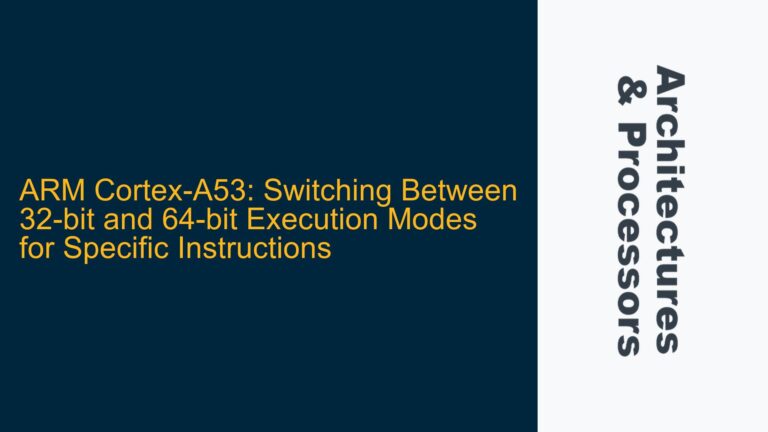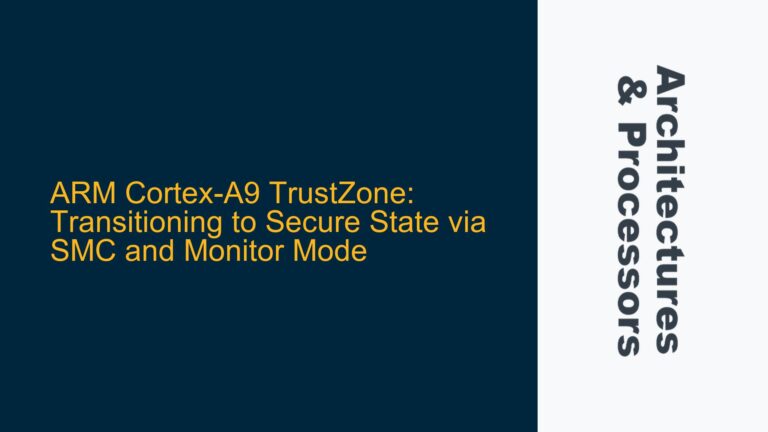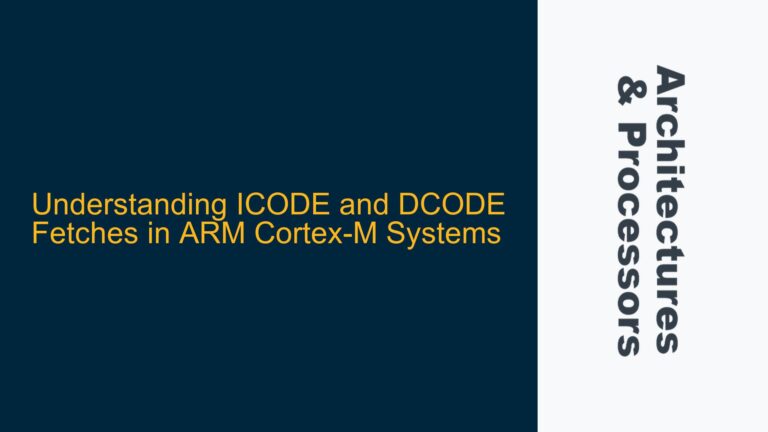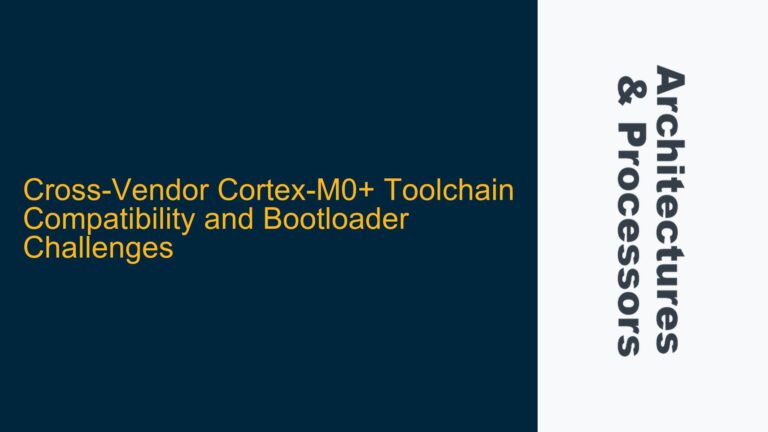ARM Cortex-A55 DSU Write Issuing Capability and Outstanding Transactions Analysis
The ARM Cortex-A55 is a highly efficient mid-range CPU core designed for power-efficient performance in mobile and embedded applications. It is often paired with the DynamIQ Shared Unit (DSU) to manage shared resources among multiple cores in a cluster. One critical aspect of the Cortex-A55 and DSU interaction is the write issuing capability, which determines how many outstanding write transactions the DSU can handle for a single Cortex-A55 core. This capability directly impacts system performance, particularly in scenarios involving high data throughput or latency-sensitive operations.
The DSU acts as a bridge between the Cortex-A55 cores and the rest of the system, managing coherency, power, and performance. Understanding the write issuing capability is essential for optimizing system performance, especially in multi-core configurations where resource contention can occur. This analysis delves into the specifics of the DSU’s write issuing capability for a single Cortex-A55 core, explores potential bottlenecks, and provides actionable insights for system designers and firmware developers.
DSU Write Issuing Capability and Cortex-A55 Interaction
The DynamIQ Shared Unit (DSU) is a critical component in ARM’s DynamIQ architecture, enabling efficient sharing of resources among multiple Cortex-A55 cores. The DSU handles coherency, power management, and performance optimization for the cluster. One of its key responsibilities is managing outstanding write transactions from the Cortex-A55 cores. The number of outstanding writes a DSU can handle directly impacts the system’s ability to process data efficiently.
For a single Cortex-A55 core, the DSU typically supports up to 32 outstanding write transactions. This means the Cortex-A55 can issue up to 32 write requests to the DSU before waiting for acknowledgments. This capability is crucial for maintaining high throughput in data-intensive applications, such as multimedia processing or network packet handling. However, the actual performance depends on several factors, including the DSU’s internal arbitration mechanisms, the memory subsystem’s latency, and the coherence protocol’s overhead.
The Cortex-A55 core itself is designed to handle multiple outstanding transactions to maximize pipeline efficiency. It employs a sophisticated load-store unit (LSU) that can queue up memory requests and reorder them for optimal performance. When paired with the DSU, the Cortex-A55 relies on the DSU to manage these transactions efficiently. If the DSU’s write issuing capability is insufficient, the Cortex-A55 may stall, leading to performance degradation.
In multi-core configurations, the DSU must arbitrate between multiple Cortex-A55 cores, each potentially issuing up to 32 outstanding writes. This can lead to contention and increased latency if the DSU’s resources are oversubscribed. System designers must carefully balance the number of cores, the DSU’s capabilities, and the memory subsystem’s bandwidth to avoid bottlenecks.
Potential Bottlenecks in DSU Write Handling
While the DSU’s support for 32 outstanding writes per Cortex-A55 core is generally sufficient for many applications, several factors can lead to performance bottlenecks. One common issue is memory subsystem latency. If the memory controller or interconnect introduces significant delays, the DSU may struggle to process all outstanding writes promptly, causing the Cortex-A55 core to stall.
Another potential bottleneck is coherency protocol overhead. The DSU must ensure that all writes are coherent across the cluster, which involves additional transactions and potential contention. In systems with multiple Cortex-A55 cores, the coherency traffic can overwhelm the DSU, reducing its effective write issuing capability.
Power management features can also impact the DSU’s performance. For example, if the DSU enters a low-power state to save energy, it may take longer to process outstanding writes, increasing latency. Similarly, dynamic voltage and frequency scaling (DVFS) can introduce variability in the DSU’s response time, affecting the Cortex-A55 core’s performance.
Finally, the DSU’s internal arbitration mechanisms play a critical role in determining how efficiently it handles outstanding writes. If the arbitration logic is not optimized for the specific workload, it may prioritize less critical transactions, leading to suboptimal performance. System designers must carefully configure the DSU’s arbitration policies to match the application’s requirements.
Optimizing DSU Write Issuing Capability for Cortex-A55
To maximize the Cortex-A55’s performance, system designers and firmware developers can take several steps to optimize the DSU’s write issuing capability. First, it is essential to minimize memory subsystem latency by using high-bandwidth, low-latency memory controllers and interconnects. This ensures that the DSU can process outstanding writes quickly, reducing the likelihood of stalls.
Second, coherency protocol overhead can be mitigated by optimizing the cache hierarchy and reducing unnecessary coherency traffic. For example, using non-cacheable memory regions for data that does not require coherency can reduce the DSU’s workload. Additionally, software can use memory barriers and cache maintenance operations judiciously to minimize coherency-related stalls.
Third, power management features should be configured to balance energy efficiency with performance. For example, the DSU’s low-power states can be adjusted to ensure that it remains responsive to the Cortex-A55 core’s needs. Similarly, DVFS policies should be tuned to avoid introducing excessive latency variability.
Finally, the DSU’s internal arbitration mechanisms should be optimized for the specific workload. This may involve configuring the arbitration policies to prioritize critical transactions or adjusting the DSU’s buffer sizes to accommodate the expected traffic. Firmware developers can also use performance monitoring tools to identify bottlenecks and fine-tune the DSU’s configuration accordingly.
In conclusion, the DSU’s write issuing capability is a critical factor in the Cortex-A55’s performance. By understanding the potential bottlenecks and implementing the appropriate optimizations, system designers and firmware developers can ensure that the Cortex-A55 and DSU work together efficiently, delivering the high performance and power efficiency that ARM’s DynamIQ architecture is known for.






